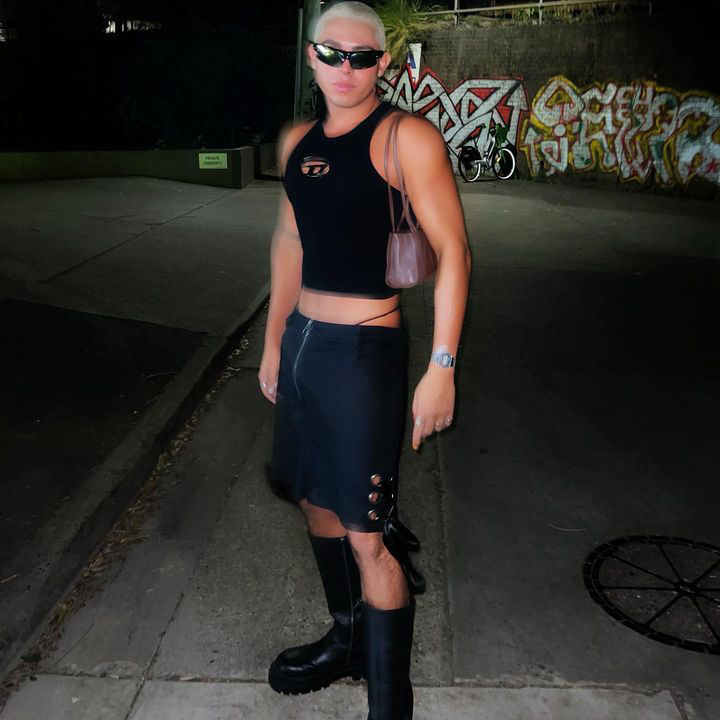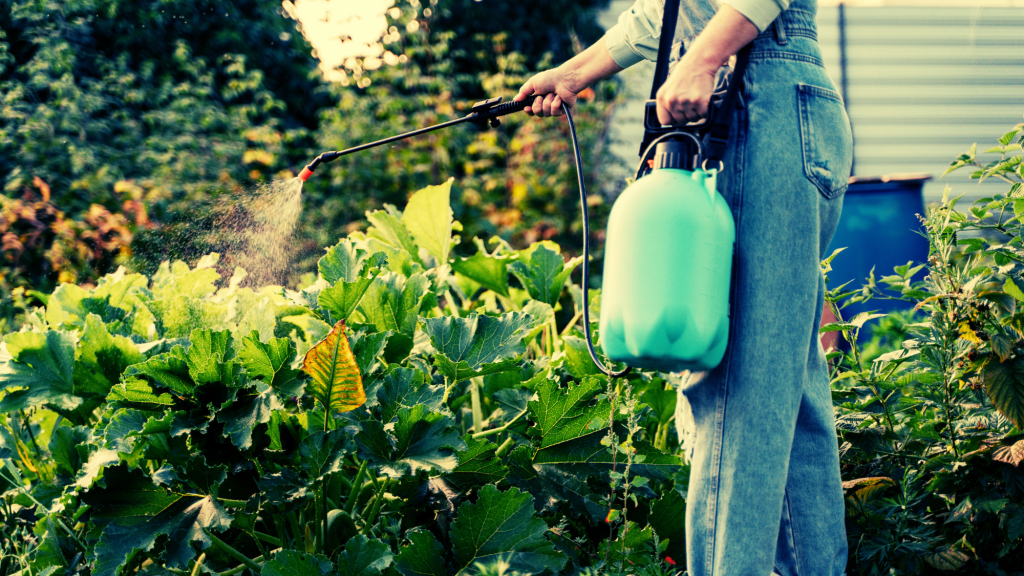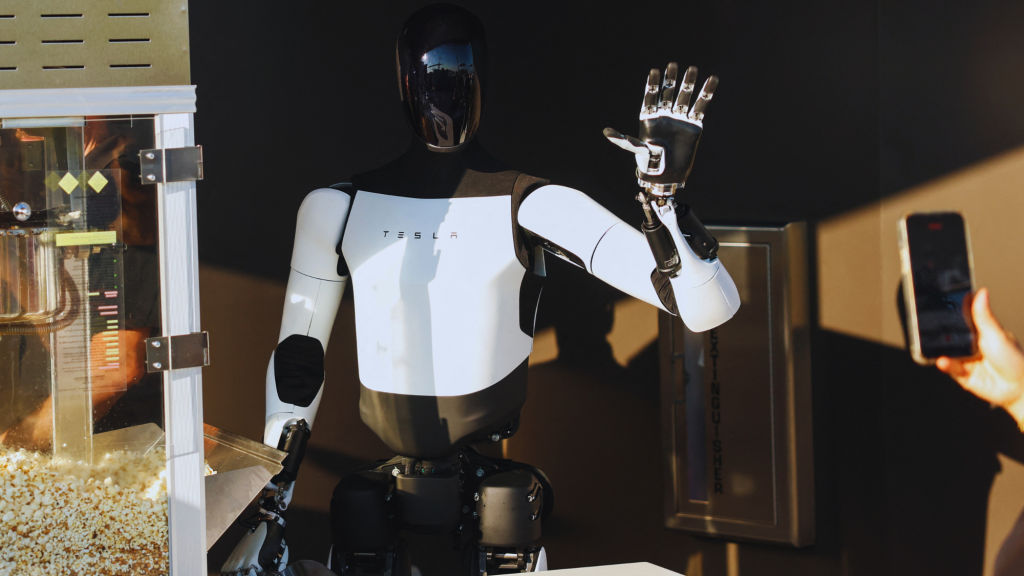Ziara Rae, star of Australia’s latest reality dating show, F-boy Island, started modelling when she was 7-years-old.
As an African-American with golden brown skin and curly hair, she’d arrive to set and face white-skinned, blonde-haired counterparts. Even at that age, she noticed something that would be a constant for her early career: she’d been cast as the side-kick.
Videos by VICE
“I was always the token Black girl,” she told VICE.
“I had a few major brands at the time tell my mum they weren’t ready for me yet.”

A decade later, it seems that sentiment still stands for many non-white and diverse models trying to break into the Australian industry, whether that be commercial or editorial. And while data on how many diverse models are employed is hard to come by, media coverage of the Australian modelling industry’s lack of diversity has been consistent. From articles revolving around the recent return of the harrowed “heroin chic” trend (Is Australia about to undo years of work and make runways thin again?) to general call-outs from POC models (Australia’s fashion industry lagging behind in diversity, top models say).
The history of model diversity in Australia has been slow and, at times, saturated in controversy. In 1993, Australian Vogue showcased its first Indigenous model, Elaine George, on the cover. It wasn’t until 2010 – 17 years later – that the second would appear.
In a David Jones 2017 Spring/Summer catalogue, Adut Akech’s appearance on the cover saw insipid feedback from a people on Facebook, with one person writing: “I don’t feel like it represents the general population of Australia”. The post subsequently went viral for the company’s “apologetic” and “whimpering” response.
And, in 2022, Australian Fashion Week featured its first show dedicated to plus-size bodies.
While diversity in fashion has come a long way in the last 10 years or so, tokenism and performative action still dominate. From hairdressers who can’t work with Black hair, to make-up artists who don’t have the right shades, the practical issues are already a barrier. But the structural issues go deeper.
“I was the only person of colour on that set. I was literally just shaking the whole time. It was so scary. Nobody really stood up for me with that.” – Ziara Rae
Ziara recounts photoshoots where she’d been the only person of colour on set – and often felt like she was intentionally brought in to fill that role.
On one recent shoot, she said she even received a 50 per cent pay reduction because her hair wasn’t “curly enough”.
“They didn’t give me a brief or anything. They literally said, ‘go dunk your head in the sink, it’s not curly enough’ and deducted my pay after I’d worked for eight hours,” she said.
“I was the only person of colour on that set. I was literally just shaking the whole time. It was so scary. Nobody really stood up for me with that.”
Three years ago, the global Black Lives Matter movement, spurred on by the unfortunate passing of George Floyd, had companies scrounging to fill their Instagram feeds with non-white bodies. Once-beige timelines became breeding grounds for photos of diverse models, and fashion brands added to the noise by promoting Black and ethnic faces from their back catalogues. It was a good time to be a person of colour in the industry. People were taking notice.
“You’re not gonna see diverse campaigns season after season when the creative team or the team behind the brand is majority white, especially when Black Lives Matter or any avid social movement isn’t fresh in their mind.” – Aurelia St Clair
Though BLM may not have determined whether a Black model was booked, it was a jumping-off point into the diversification of an industry that, for years, lulled in the confines of whiteness. For a few months, bigger bodies, different backgrounds and different heights trumped the Eurocentric beauty standards. But that support has since dwindled.
“I hate to say it, but right around the Black Lives Matter movement, when a lot of Australian brands were very out of touch and felt the need to – out of public perception – book Black people, I was very busy,” Lisa*, who was scouted by one of Australia’s prestige modelling agencies a few years ago, told VICE.
“It was at the point where I couldn’t be in more than one place at once.”
It’s no secret ethnic models get more work after traumatic global events. Whether it’s Black Lives Matter, the Stop Asian Hate campaign or even the death of Cassius Turvey – companies want to ride whatever wave is trending.
“You’re not gonna see diverse campaigns season after season when the creative team or the team behind the brand is majority white, especially when Black Lives Matter or any avid social movement isn’t fresh in their mind,” Cameroonian comedian, writer and model Aurelia St Clair told VICE.

“It was like the Asian Hate campaign – you were seeing more diversity in that sort of field. But once it was over, they were like, ‘Oh, wow, that was 18 months ago, we did our bit.”
At this year’s Australian Fashion Week, the reviews of model diversity came in hot and heavy. Alicia Vrajral wrote in Refinery29 about the lack of shows representing plus-size models and people with disabilities, while the Sydney Morning Herald discussed the difference between performative and authentic inclusion from both big and small brands.
“I’ve done so much work in the last couple of years and I still feel like it really isn’t enough.” – Basjia Almaan
In 2021, Sydney-based model and movement coach Basjia Almaan set Australian media alight after a poignant Instagram post criticising Fashion Week’s diversity went viral. It landed her a gig as a casting director for an Iordanes Spyridon Gogos show.
“Last year [2022], it was very similar to the feeling of Black Lives Matter, because the year before there had been such an issue with the lack of diversity,” Almaan told VICE.
“Last year, everyone was like, ‘Diversity, lets do it’. And then this year, I feel like – there were a couple of brands that have stayed consistent with who they book – but for the majority, it felt the same.
“And it’s no disrespect to any model who is doing what they have to do for work. But it’s just like, why do brands and companies just do the same thing over and over? When is the actual change going to happen?
“I’ve done so much work in the last couple of years and I still feel like it really isn’t enough.”
Lisa* said she often felt like one of the only people of colour invited to industry events, which she chalked up to the fact that most agencies have white leadership teams.
“How can a room full of white people advocate for diversity when the team, in itself, is full of out of touch white people who don’t understand the first thing about diversity?” Lisa said.
“Because those are the facts. And then, when they do book Black models, they don’t understand the layers of what that means. Booking, for example, a light-skinned Black person that fits in with their “standards of beauty” is not the same as booking a dark-skinned Black woman.
“And I’m not saying that a fair-skinned person doesn’t deserve to be booked. They do. We all deserve to be booked. But what I’m saying is that these opportunities are presented more to them, because the people behind the scenes don’t understand the nuances of colours.”
“There’s been times on set where I look at my archetype and it says ‘Asian man’. I’m not Asian at all but to some people I guess I kind of look like that. There’s also been other times where it literally just says ‘racially ambiguous’.” – Juan Dueñas Gutierrez
When it comes to colourism in the industry, models that are seen as palatably diverse for a white market often present as racially ambiguous. Australian model of Colombian descent, Juan Dueñas Gutierrez, believes his “lighter skin” is one reason he gets booked for jobs.
“I’ve noticed here that my racial ambiguity to white Australians is definitely a privilege because I’m more likely to get booked for jobs because they can fit me into more categories,” he told VICE.
“When you look at a lot of the briefs for the characters that they’re casting, it’s so funny, because there’s been times on set where I look at my archetype and it says ‘Asian man’. I’m not Asian at all but to some people I guess I kind of look like that. There’s also been other times where it literally just says ‘racially ambiguous’.”

The bigger issue, according to Gutierrez, is that it’s a digestible beauty standard upheld by modelling agencies in order to performatively diversify their cast. Rather than clients or agencies doing their due diligence and presenting models that fit the briefs, racially ambiguous ones fulfil those roles. And it’s those few, save the anomalies, that are usually prioritised in agency’s rosters.
“And so I even question myself, and also other models that I know, how often are we actually getting put out and sent out for jobs or for castings, compared to our white peers? How often is that actually happening?” – Mayatu Nova
El Salvadorian model Mayatu Nova said there are specific ideals for people of all races that hold the industry back.
“There are agencies that actively are like, ‘Oh, yeah, you’re not a part of the industry standard, but we don’t really give a shit about that, we will still support you’, but that’s not where a lot of other agencies are sitting,” she told VICE.
“Unless you’re Sudanese and super tall, they’re very much not interested. Once they have three to four mixed girls, or light-skinned girls, they don’t need anyone else. But then they’ll have books and books of the very standard Euro-centric model.”

But Nova said even being on the books isn’t enough – it’s still easy to be overlooked.
“Because there are only four or five diverse models, they’re only going to put you out every time they want to tick that box,” she said.
“And so I even question myself, and also other models that I know, how often are we actually getting put out and sent out for jobs or for castings, compared to our white peers? How often is that actually happening? Because at the end of the day, I don’t really believe, wholeheartedly, that they’re actually putting the effort into representing us.”
“Most of these agencies are white-run, so no one is going to be there to speak for Black voices.”
VICE contacted three of Australia’s largest agencies for this story: IMG models, Vivien’s Model Management and Priscilla’s Model Management. Only Priscilla’s, which opened its doors in 1988, responded to requests for comment.
“We can’t make the clients use the girls we think they should use, we have to encourage and present the model as best as we can to encourage the client to use that model.” – Priscilla Leighton Clarke
“In reality, Priscilla’s is a very small agency representing just over 200 models and probably just over 70 of them are people of colour. So I think that’s a pretty good representation,” owner and founder, Priscilla Leighton Clarke, told VICE.
When it comes to what clients want, Clarke said it can be “extremely frustrating”.
“We can’t make the clients use the girls we think they should use, we have to encourage and present the model as best as we can to encourage the client to use that model,” she said.
While that might be the case, models actively working in modelling told VICE they believed the fashion industry was beginning to tilt back to its long-held Eurocentric aesthetics, and many still felt like they weren’t being put forward for jobs in comparison to their white-counterparts.
“Australia is just always going to follow whatever works,” Mayatu Nova said.
“If all of a sudden Europe was like, ‘We love this’, Australia would just follow. The industries are so happy to go along with it. So until Australia grows its own legs, we’re not really going to see any change.”
Clarke put the move back to Eurocentric beauty standards down to constantly changing industry standards and trends.
“It will do that. Because of ebbs and flows here, it just does. And I think if you were blonde last year, you couldn’t get hired.”
And while Clarke said diversity was important, she also likened the criteria for modelling – specifically high-fashion – to being the same as any other specialised field.
“We’ll have a lot of people who go, ‘Well, why can’t my daughter be a model?’” she said.
“There are requirements for modelling. [For example,] we have plus-size models now. But plus-size also falls within a range of size, and you need to be within that range, you’ve got to have height, and if you’re a typical model, you’ve got to have a certain body size. So, all those factors come into play, not just the colour of your skin.”
But perhaps it’s this outdated industry standard – trickling down from the top – for tall, thin, white models that’s having a roll-on effect for beauty standards for models and the everyday person.
Even the UK – one of the oldest and largest industries in the world – was found to have less than 20 per cent of people in senior positions of power in the fashion industry who identified as ethnic minorities. From how diverse people are presented, to whether clients will hire them, it’s a complex matrix that’s not only about visibility but also genuine inclusion in decision making.
“I think there needs to be structural change for the people in charge at the top,” said Lisa.
“Where’s the diversity? Hire one person for the sake of understanding who benefits from whiteness. And once you start making these structural systemic changes to the industry, only then can the people who are further downstream like me as a model, see the change.”
Follow Julie Fenwick on Twitter and Instagram.
Read more from VICE Australia and subscribe to our weekly newsletter, This Week Online.
More
From VICE
-

Screenshot: NetEase -

Dan Kitwood/Getty Images -

Photo: Tatiana Maksimova / Getty Images -

Photo: PATRICK T. FALLON/AFP via Getty Images
